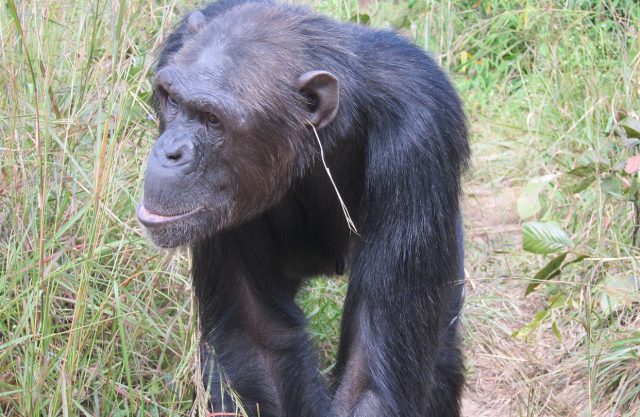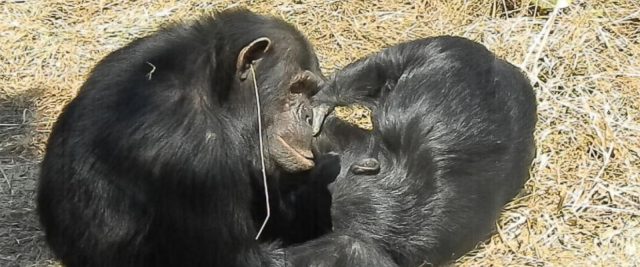Language evolution (2): What’s behind the emergence, use and change of language?
After Language evolution: The origin, we will go over some of the fundamental substrates of human language. As if mind or anatomy were not broad enough themselves, we will see how a host of structures contributes to language. Each of them has their own role in the emergence, use and change of language as one of the most human of the human faculties—and of course, there is a host of interactions among all the variables. The variables covered here are not randomly selected–they are among the most extensively covered to date.1

1 In the mind and brain
In this regard, the majority of accounts have occupied two ballparks. Some contend that language evolution (LE) necessitated cognitive systems that were specifically suited to it. In stark contrast, other accounts posit no such language-specificity, highlighting instead the value of general cognitive systems.
1.1 A language-specific system
In the late 1960s, Chomsky (1968) touched upon LE as he posited an innate faculty for language in humans. Thus, hardwired in the brain by way of a ‘Universal Grammar’ (UG), language would be primarily supported by a ‘Language Acquisition Device’ (cf. ‘critical period,’ extending roughly until the child’s tenth year).
In their landmark paper, Pinker and Bloom (1990) coincided with Chomsky on the evolutionary discontinuity, as they too posited a fundamental gap between the communicative system of modern humans and that of our closest ancestors. Yet, beyond support, Chomsky’s UG attracted much dissent, especially with regard to its emergence. Contra Chomsky’s ‘macromutation,’ Pinker underscored the role of natural selection, famously likening the evolution of UG to that of vision.
1.2 A general cognitive system
Other scholars see no need for innate, language-dedicated devices. The emergentist approach (also dubbed empiricist or functionalist, as opposed to nativist or generativist) points to general cognitive structures in the modern human brain as the fundamental support for language (Enfield, 2013). General cognitive systems of two types have emerged within this paradigm:
Complex-structure cognition. This account underscores the importance of cognitive developments for LE (as accompanied by a sheer increase in brain size). In this vein, Christiansen and Kirby (2003) remark on the ability to process complex relations and hierarchies as a prime essential of the language capacity.
Complex social cognition. What really made a difference for LE may have been high-level social cognition. Tomasello (2009)—’Universal Grammar is Dead’—argues that any and all so-claimed linguistic universals are the result of more general biases in human thought. For instance, semantic roles across languages would be explained by the natural tendency of humans to think in categories.
2 In the genes
Fisher et al.’s (1998) report on the relationship between an inherited language impairment and the mutation of a gene was hailed by nativists as the discovery of the ‘language gene’ (Pinker & Jackendoff, 2005). However, the emergence of that protein, the FoxP2, has been dated back to evolutionary stages prior to language, and the human exclusivity of this gene has been annulled, as it is also involved in the communication of other animals including songbirds (Wohlgemuth, Adam & Scharff, 2014). The FoxP2 would not support language specifically but, more generally, communication.
3 In the body
LE is crucially linked to certain anatomical developments. We know of an enlargement of the cranium, as well as the appearance of thoracic anatomical features that are unique to later hominids. There exist three main lines of explanation about the relation between such anatomical changes and LE: (a) preadaptations for language (Fitch, 2011), (b) interactive language-biology shifts (Levinson & Holler, 2014), and (c) processes independent of language (Chomsky, 2011).
4 In culture
The cultural factor is informed from language fieldwork and archaeology, each tackled below.
4.1 Universals vs diversity of language
Proposals of an innate language faculty came with design constraints—when not categorical principles (Greenberg, 1963). It would follow, then, that every language should share significant properties. It was that very connection that led to a long quest for linguistic universals, now via fieldwork on isolated languages, now via language acquisition studies (for a comprehensive discussion, see Evans and Levinson, 2009, and commentary therein). Among other findings, ‘constituency’—[[which] [allows] [for [[the [connection] [of [structures]]]]] [in [a systematic [guise]]]]—is present in an overwhelming majority of the known languages. More recently, the rarer indigenous languages—mostly in Oceania and South America—have become the strongest case against universals, with myriad formal universals refuted to date (Evans & Levinson, 2009).
— Phonetics: The possibility of sounds in a language is virtually infinite, for all we know.
— Phonology: Pattern CV > V > VC is not universal.
— Morphology: Isolating languages are no less functional than polysynthetic ones.
— Lexicon: The Big Four (nouns, verbs, adjectives and adverbs) are not all universal.
— Syntax: Subject and Object categories are not universal; nor is recursion.
— Semantics: Space, quantity, colour, etc. are not universally articulated as in English.
— Discursive: Conditionals are not always expressed via isolated morphemes.
Following from such evidence, Enfield (2013) only sees place for communication-based universals—notably, social cognition (cf. §1.2).
4.2 Culture as a gateway to language
The evolution of cultural practices has been explored via comparative studies with chimpanzees, and via archaeological explorations of early cultural products. In the comparative tradition, Tennie, Call and Tomasello (2009) investigated the interaction between process-oriented social learning, and increasing group cooperation, finally coining the ‘ratchet’ effect—i.e., accumulation of cultural practices (see also van Leeuwen, Cronin, & Haun, 2014; the all-cuteness summary of the latter ; and the pictures here!).

In the case of archaeological explorations, two main types can be distinguished: semiotic references, as painted on vases or walls (Chazan & Horwitz, 2009), and tools, furniture and shelter (Stout, Toth, Schick, & Chaminade, 2008). Based on these cultural products, scholars elucidate what mental mechanisms may have been necessary for their production. In the same vein, Uomini and Meyer (2013) investigated the relationship between the cognitive demands of language use and those of a prehistoric practice such as stone knapping, finding a significant number of neural substrates shared by both activities (see also this video for a nice explanation).
Focused on the earliest stage of language, Steels (2012) modelled the emergence of mirror behaviour and its role for body language. Modelling also serves to trace the often obscure course of grammaticalization. Interestingly, while this used to be modelled backwards, starting with the resulting form, to then tackle the proto-form—e.g., ‘give’ deriving from ‘other-have’—, recent computational techniques have allowed for simulations in the natural direction, starting with the proto-form, through the gradual addition of conventionalized patterns (Vogt, 2006). In all, modelling is a method on the rise in LE research. Furthermore, it is linked to less speculation:
language evolution modelling speculation (3)
÷ language evolution modelling (2,026)
= 0.001481
Above, the ratio of speculation is shown for LE research involving (computational) modelling (cf. Table 1, in Language evolution: The origin).
References:
Chazan, M., & Horwitz, L. K. (2009). Milestones in the development of symbolic behaviour: a case study from Wonderwerk Cave, South Africa. World Archaeology, 41, 4, 521-539
Chomsky, N. (1968). Language and Mind. New York, NY: Harcourt Brace
Chomsky, N. (2011). Language and Other Cognitive Systems. What Is Special About Language? Language Learning and Development, 7, 4, 263-278.
Christiansen M. H., & Kirby, S. (2003b). The hardest problem in science? In Christiansen, M. H. & Kirby, S. (Eds.), Language evolution (pp. 1-15). Oxford: OUP
Enfield, N. J. (2013). Language, culture, and mind: Trends and standards in the latest pendulum swing. Journal of the Royal Anthropological Institute, 19, 155-169
Evans, N. & Levinson, S. C. (2009). The myth of language universals: Language diversity and its importance for cognitive science. Behavioral and Brain Sciences, 32, 429-492.
Fisher, S. E., Vargha-Khadem, F., Watkins, K. E., Monaco, A. P., & Pembrey, M. E. (1998). Localisation of a gene implicated in a severe speech and language disorder. Nat Genet, 18, 168-170
Fitch, W. T. (2011). The evolution of syntax: An exaptationist perspective. Frontiers in Evolutionary Neuroscience, 3, 9
Greenberg, J. H. (1963). Universals of Language. London: MIT Press
Levinson, S. C., & Holler, J. (2014). The origin of human multi-modal communication. Phil Trans R Soc B, 369, 20130302
Pinker, S., & Bloom, P. (1990). Behavioral and Brain Sciences, 13, 707–84
Pinker, S. & Jackendoff, R. (2005). The faculty of language: What’s special about it? Cognition, 95, 2, 201-236
Steels, L. (2012). Emergent mirror systems for body language. In Steels, L. (Ed.), Experiments in Cultural Language Evolution. Amsterdam: John Benjamins
Stout, D., Toth, N., Schick, K., and Chaminade, T. (2008). Neural correlates of Early Stone Age toolmaking: technology, language and cognition in human evolution. Phil Trans R Soc B, 363, 1499, 1939-1949
Tomasello, M. (2009). Universal Grammar is dead. In N. Evans, & S. C. Levinson, The myth of language universals: Language diversity and its importance for cognitive science (pp. 470-471). Behavioral and brain sciences, 32
Uomini N. T., Meyer G. F. (2013) Shared Brain Lateralization Patterns in Language and Acheulean Stone Tool Production: A Functional Transcranial Doppler Ultrasound Study. PLoS ONE 8, 8, e72693.
Vogt, P. (2006b). Overextensions and the emergence of compositionality. In A. Cangelosi, A. D. Smith and K. Smith (Eds.) Proceedings of Evolang 6 (World Scientific Publishing).
Wohlgemuth, S., Adam, I., Scharff, C. (2014). FoxP2 in songbirds. Current Opinion in Neurobiology, 28, 86-93.
Note: